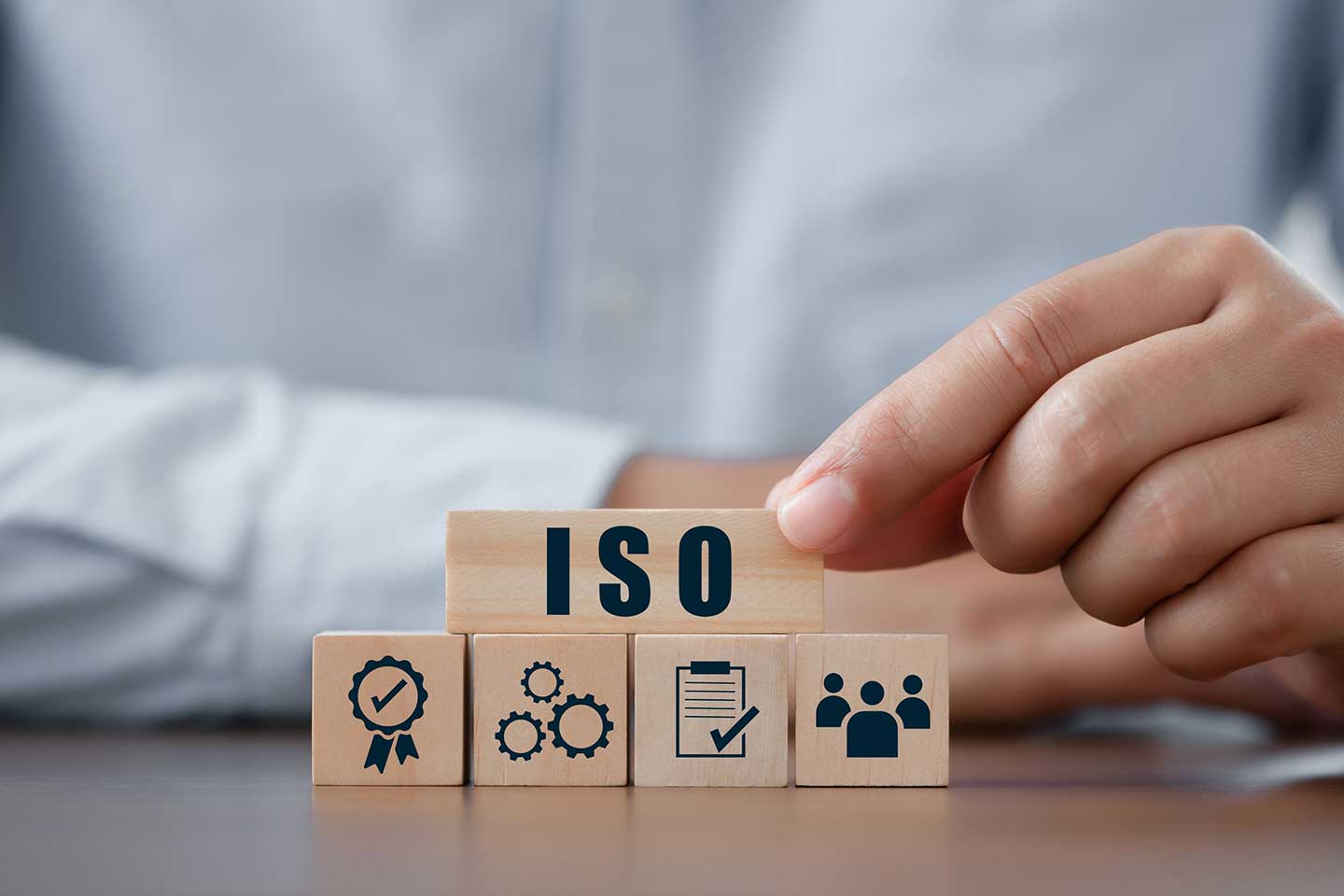ISO 9001 is the best known and most widely used international quality management standard. Originating in the industrial sector, it is increasingly gaining importance in the healthcare sector as well. But does certification according to ISO 9001 have any advantages for radiology practices? What are the requirements and how does the certification process work in practice? This article provides answers to these and other questions.
What is the ISO 9001 standard?
ISO 9001 is a globally recognized quality management standard issued by the International Organization for Standardization (ISO). Its current version is ISO 9001:2015. The standard defines cross-industry requirements for quality management systems of companies and other organizations. At its core, it is about the ongoing optimization of processes to meet customer needs and continuously improve the company’s performance. Companies can have their compliance with the standard confirmed by certification.
Do radiology practices and departments need certification?
In Germany, medical service providers such as medical practices or hospitals are required by the German Social Code (SGB V § 135a) to introduce and further develop an in-house quality management system. The Federal Joint Committee (G-BA) defines general requirements for this in its quality management guideline. However, the legislator does not prescribe specific quality management standards, nor does it require certification by independent inspection bodies. Implementation of the ISO 9001 standard therefore remains voluntary.
More stringent quality management regulations apply in radiology, because radiation protection requirements must also be observed. According to the Radiation Protection Act (StrlSchG) and the Radiation Protection Ordinance (StrlSchV), the recording and documentation of radiation doses is mandatory for the majority of applications. In addition, the StrlSchV requires the preparation of written work instructions for all procedures in radiology. This means that radiology practices already automatically fulfill part of the requirements of ISO 9001 in their core processes.
In most other countries, too, the fulfillment of certain quality standards is generally a prerequisite for healthcare facilities to be able to treat primary care patients. There are specific requirements for diagnostic imaging. In the U.S., for example, healthcare facilities can either be inspected by state authorities or have a state-approved certificate. Traditionally, the majority of healthcare facilities there are certified by the non-profit organization Joint Commission on Accreditation of Healthcare Organizations (JCAHO). Depending on the state, there may be additional legal requirements to meet.
What alternative certification options are available?
ISO 9001 is widely used, but there are also alternative quality management certificates, some of which are specifically designed for the healthcare sector. In Germany, Austria and Switzerland, these certificates are common:
- QEP certificate (Quality and Development in Practices) of the Association of Statutory Health Insurance Physicians (KV)
- EFQM certificate (European Foundation for Quality Management)
- EPA certificate (European Practice Assessment), awarded by the association “Stiftung Praxissiegel e.V.”
The QEP certificate and the EPA certificate are aimed specifically at healthcare facilities and, compared to ISO 9001, define more concrete requirements for quality management. However, these certificates are not recognized worldwide.
Why does ISO 9001 certification make sense for radiology practices?
Nevertheless, ISO 9001 certification is becoming more and more prevalent in the healthcare sector. Due to its international character, the standard is binding and makes medical facilities comparable across regions. The general benefits of ISO 9001 quality management certification include:
- Compliance with legal requirements: The implementation of basic quality management standards is required by law for healthcare facilities. Exemplary implementation of these legal requirements minimizes liability and recourse risks.
- Economic advantages: The requirements of ISO 9001 are not limited to the core processes in radiology, but also include aspects such as HR management, purchasing and procurement. By optimizing all these processes and procedures, existing resources are used more efficiently. Medical facilities can thus reduce costs, boost revenue and strengthen their overall competitiveness.
- Improving medical quality: Medical errors in medical practices or clinics often stem from organizational deficiencies. With seamless quality management, typical error sources such as documentation errors or the mixing up of patient data can be largely avoided.
This is how the ISO 9001 certification works
So what exactly needs to be done once a radiology practice or department aims for ISO 9001 certification?
Step 1: Selection of a certification body
There are a number of different certification bodies that specialize in awarding ISO certificates. When selecting one, practice owners should make sure that the body is nationally accredited – because only then will the certificate be recognized by government agencies and other stakeholders. Before the certification body submits a concrete offer, it will obtain initial important information about the practice or company. Only then will a binding contract be concluded.
Step 2: Internal preparation for the ISO 9001 certification
Internal preparation for certification is usually the most time-consuming phase in the entire process. This is because the ISO 9001 quality management system must be fully implemented before the actual certification audit.
At its core, quality management according to ISO 9001 aims at the continuous improvement of all internal processes. The following steps, among others, are therefore required in preparation for certification:
- the definition and written documentation of all processes in the practice: from scheduling appointments to examination and treatment procedures to personnel and resource management
- the creation of a comprehensive quality manual that contains concrete quality goals and measures for their implementation
- conducting surveys among stakeholders, such as employees, patients and referring physicians, to determine their satisfaction with the organization
- implementing a nonconformity or error management system to define measures for dealing with errors.
The background to all these measures is the Plan-Do-Check-Act cycle (PDCA cycle) according to William Edwards Deming: First of all, concrete goals are defined, the corresponding processes are carried out and the success is measured using key figures. New goals and new processes are then derived from this.
Step 3: Pre-audit
A pre-audit is a voluntary preliminary check to determine the extent to which the requirements of the ISO 9001 standard have already been met. If there are still weaknesses or possible gaps in the documentation, the auditor will make concrete suggestions for improvement. The pre-audit is particularly useful to avoid unpleasant surprises during the actual certification audit.
Step 4: Certification audit
The audit for the ISO 9001 certificate itself usually consists of two parts: During the first appointment, the auditor will check all quality management documents on site for completeness and plausibility. If necessary, documents can be submitted subsequently. The second appointment includes a detailed practice inspection as well as employee surveys and can take four to eight hours, depending on the size of the practice.
Step 5: Award of the ISO 9001 certificate
After the certification audit, the auditor will prepare a detailed report. If all ISO 9001 requirements are met, a final meeting will take place and the practice will receive its certification certificate.
Step 6: Surveillance audits
The ISO 9001 certificate is valid for three years, with compliance verified through annual surveillance audits. These surveillance audits consist of spot checks and are less extensive than the certification audit.
5 tips for certifying a radiology practice
1. Allocate sufficient time, human and financial resources for ISO 9001 certification.
ISO 9001 certification cannot simply be done on the side. Especially the initial implementation of a quality management system often causes a high effort because all processes have to be recorded and a detailed quality manual has to be created. Experience shows that preparation for certification can take several months or even a year. Practice owners should definitely also calculate both direct and indirect costs for the certification as well as the additional work of the staff in advance.
2. Get all employees on board
Typically, a quality management representative or core team is appointed to be responsible for certification and to coordinate the entire process. Nevertheless, it is important to involve all staff and keep them informed of the project’s progress. Intensive communication and training can ease employees’ fears about the ISO 9001 certification audit.
3. Set meaningful quality objectives
In order to set goals and measure results within the quality management cycle, ISO 9001 certification requires concrete key performance indicators. Suitable quality indicators for radiology practices include:
- In the area of core processes:
- Error and repetition rates
- Material consumption per examination
- Waiting times of patients before and during diagnostics
- Regarding service quality:
- Ratings of patients
- Number of complaints
- Ratings by patients (determined by surveys)
- Ratings by referring physicians (determined by surveys)
- In the area of HR management:
- Number of days absent
- Number of training courses completed
- staff turnover (number of resignations)
- General business management key figures:
- Utilization rate of equipment
- Change in sales compared to previous year
- Return on sales
Of course, the specific quality goals and indicators that make sense also depend on individual aspects such as the size and specialization of the radiology practice.
4. Broad definition of customers
An essential cornerstone of ISO 9001 is the consistent customer orientation in all processes and procedures within the company. In the broadest sense, the “customers” of a radiology practice include not only patients, but all institutions or stakeholders with whom the practice deals – for example, referring physicians, payers or government agencies. It may be useful to solicit feedback from these stakeholders as well.
5. Conduct regular internal audits
One of the core requirements of ISO 9001 is the continuous improvement and optimization of processes. It is therefore not enough to rest on the certificate once it has been acquired. In many radiology practices, it has proven effective to hold regular internal audits to work on specific problems or challenges.
An ISO 9001 certification can strengthen competitiveness
Especially in radiology, high quality standards are more important than ever. Certification according to the ISO 9001 standard is associated with an increased effort in the implementation phase. In the long term, however, effective quality management helps to optimize workflows and thus strengthen not only medical quality but also the economic success of the radiology practice or department.






